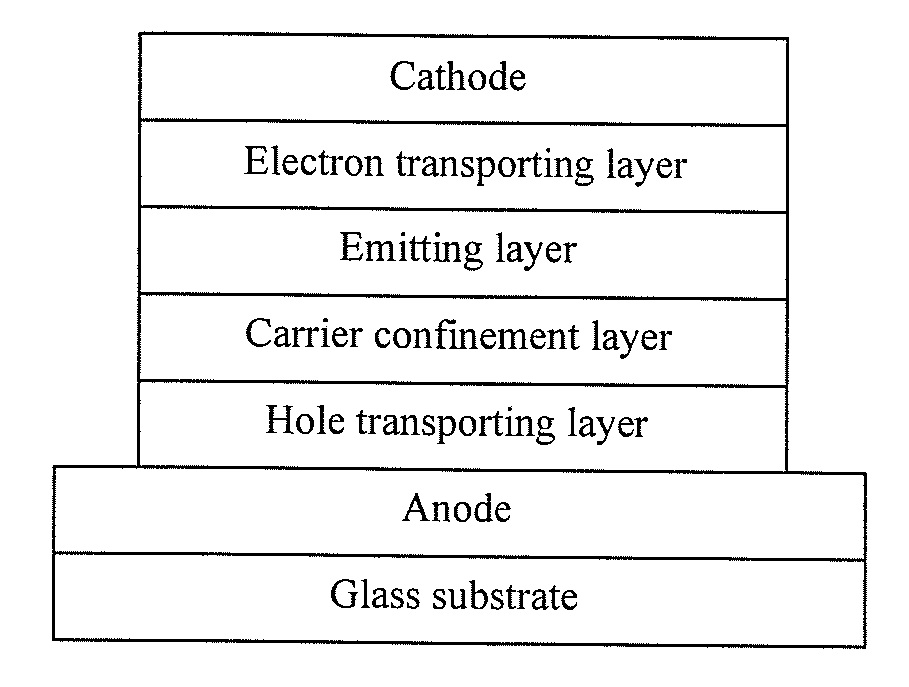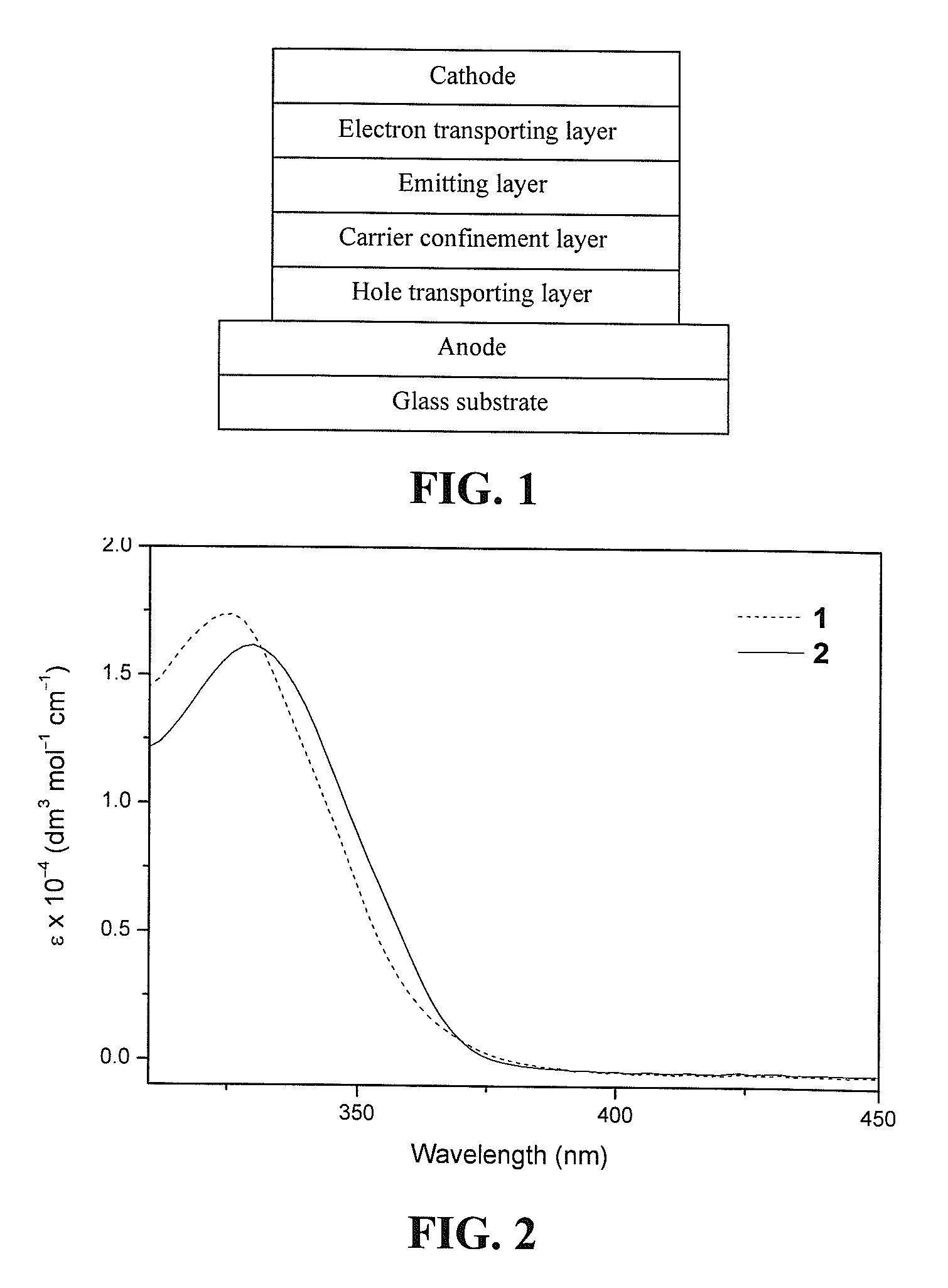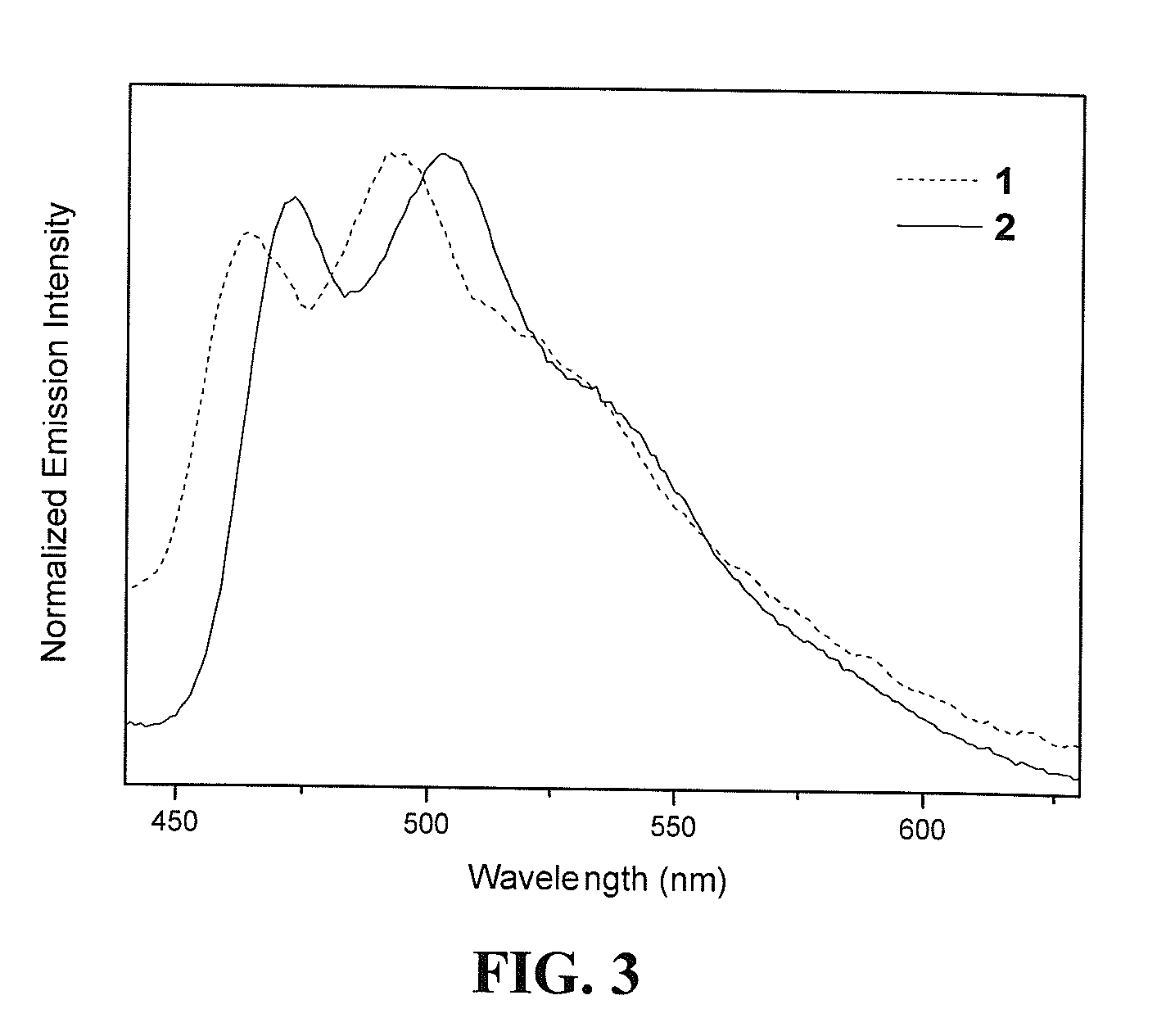Luminescent gold(III) compounds containing bidentate ligand for organic light-emitting devices and their preparation
a technology of organic light-emitting devices and compounds, which is applied in the direction of gold organic compounds, group 1/11 organic compounds without c-metal linkages, and thermoelectric devices, etc., can solve the problems of low efficiency of single-layer devices, largely unexplored use of phosphors containing alternative metal centers with these ligands, and underdevelopmen
- Summary
- Abstract
- Description
- Claims
- Application Information
AI Technical Summary
Problems solved by technology
Method used
Image
Examples
example 1
Synthesis and Characterization
[0058]Compounds 1-17 were prepared according to the following methodology as illustrated in Scheme 1 below. Compound 18 and 19 were prepared using the methodology shown in Schemes 2 and 3, respectively, whereas compounds 20-22 were prepared according to Scheme 4. The precursor compound, [Au(ĈN)Cl2] and [Au(N̂N)Cl2]PF6, were prepared as disclosed in Constable et al., J. Organomet. Chem. 363, 419 (1989) and Cinellu et al., J. Chem. Soc., Dalton Trans. 1261 (2000), which are incorporated herein by reference. Compounds 1-22, with the exception of compound 18, were synthesized by the reaction of the respective precursor compounds with various alkynylating reagents. Compound 18, as shown in Scheme 2, is prepared from compound 16 where the —Si(CH3)3 group acts as a protecting group that can be removed or “deprotected” by reaction with a deprotecting agent, such as a fluoride ion, which is a strong nucleophile towards Si. As indicated in Scheme 2, the fluoride...
example 2
[0061]Photoluminescence (PL) properties of luminescent gold(III) compounds in solid thin film were studied by doping 20 wt % compound 2 into a high triplet energy host matrix, formed by mixing 70 wt % poly(N-vinyl-carbazole) (PVK) with 30 wt % 2-(4-butylphenyl)-5-(4-tert-biphenylyl)-1,3,4-oxadiazole (butyl-PBD). The dye-doped PVK:butyl-PBD blend was spin-coated onto a quartz substrate from a 28 mg / ml solution (total solids) in 1,2-dichloroethane (DCE) at 3000 rpm for 30 seconds to form 70 nm thin film. PL spectrum was obtained on a Spex Fluorolog-2 model F-111 fluorescence spectrofluorometer equipped with a Hamamatsu R-928 photomultiplier tube.
example 3
[0062]The same materials and processing procedures were employed as described in Example 2, except that a purely undoped 70 wt % PVK:30 wt % butyl-PBD was used instead of the dye-doped thin film. FIG. 4 shows a photoluminescence spectra of dye-doped and undoped PVK:butyl-PBD thin films. As shown in FIG. 4(a), the undoped PVK:butyl-PBD thin film exhibits intense deep blue emission with a dominating peak at 437 nm, corresponding to Commission Internationale de I'éclairage (CIE) coordinates of (0.16, 0.10). The dye-doped thin film shows an additional peak at 554 nm, which is expected to be arising from compound 2, as shown in FIG. 4(b). In particular, a white emission with CIE of (0.28, 0.35) was obtained when compound 2 was doped into the PVK:butyl-PBD matrix.
PUM
| Property | Measurement | Unit |
|---|---|---|
| Electroluminescence | aaaaa | aaaaa |
| Solution | aaaaa | aaaaa |
| Luminescence | aaaaa | aaaaa |
Abstract
Description
Claims
Application Information
 Login to View More
Login to View More - R&D Engineer
- R&D Manager
- IP Professional
- Industry Leading Data Capabilities
- Powerful AI technology
- Patent DNA Extraction
Browse by: Latest US Patents, China's latest patents, Technical Efficacy Thesaurus, Application Domain, Technology Topic, Popular Technical Reports.
© 2024 PatSnap. All rights reserved.Legal|Privacy policy|Modern Slavery Act Transparency Statement|Sitemap|About US| Contact US: help@patsnap.com










